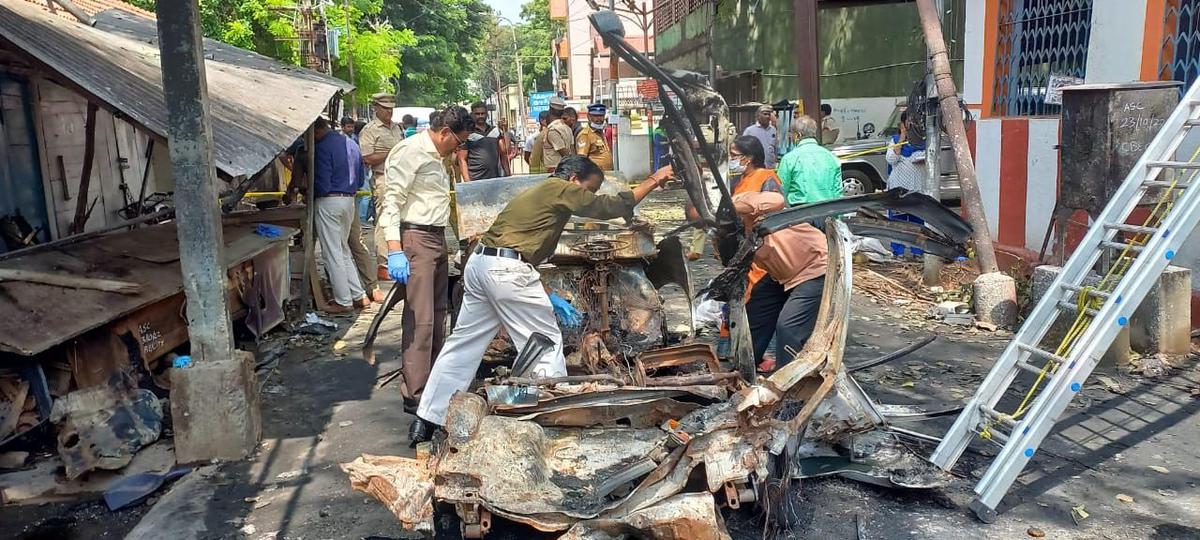
Materials seized from blast accused’s home included compounds not easily available
The Hindu
COIMBATORE
The cache of materials seized from the rented house of Jameesha Mubin, 29, the suspected mastermind of a terror plot who died in a car blast in front of a temple in Coimbatore, included compounds used in explosives that are not easily available in the market, investigators said.
Two of the compounds — pentaerythritol tetranitrate (PETN) and nitroglycerin — which the NIA mentioned in its FIR in the case, were “sensitive materials” that were not easy to procure, a credible source said.
Among other applications, PETN is a compound used for making detonators. Nitroglycerin is a raw material used for blasting gelatin, a powerful explosive. Nitroglycerin is also manufactured in pharmaceutical grade, the source said.
The source added that PETN could only be procured from a manufacturer of high explosives, and it was not easy to be sourced in normal cases. The compound itself was an explosive material and very sensitive.
As per the FIR registered by the NIA, which took over the investigation from the police, a total of 109 articles, including potassium nitrate, black powder, match box, cracker fuse for a length of about two metres, nitroglycerin, red phosphorus, PETN powder, aluminium powder, portable oxygen cylinder, sulphur powder, glass marbles, gas regulator, batteries, wires, iron nails, switch, insulation tape, packing tape, gloves and notebooks with details of Islamic ideology and jihad were recovered from Mubin’s rented house, which is about 350 m away from Sangameswarar temple in Kottaimedu, where the car blast, suspected to have been caused by an LPG cylinder, claimed his life around 4 a.m. on October 23.
The police had claimed that Mubin and his associates had purchased some of the raw materials through e-commerce websites over a period of time. They had also said that Mubin was carrying some of these raw materials in three small cans in the car, which exploded in front of the temple. While one LPG cylinder exploded, another one remained intact. Nails and glass marbles were found strewn around the blast site.
Meanwhile, an officer who was part of the police investigation claimed that PETN and nitroglycerin were not found in the house. A liquid substance seized from the house was isopropyl alcohol, and another material was yet to be verified, the official said. Police officers involved in the investigation also refused to comment on whether Mubin and his accomplices had been planning to make improvised explosive devices (IEDs) using these materials.

Indian Forest Service (IFoS) officer R. Gokul, who was suspended by the State government in connection with a case filed in the Supreme Court seeking permission to denotify 443 acres of HMT forest land, besides writing a letter to the CBI, has reportedly admitted to his mistake and submitted an unconditional apology.





















 Run 3 Space | Play Space Running Game
Run 3 Space | Play Space Running Game Traffic Jam 3D | Online Racing Game
Traffic Jam 3D | Online Racing Game Duck Hunt | Play Old Classic Game
Duck Hunt | Play Old Classic Game









